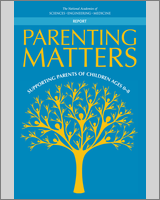From: 4, Universal/Preventive and Widely Used Interventions

NCBI Bookshelf. A service of the National Library of Medicine, National Institutes of Health.
It is difficult to draw lessons from older-model early care and education (ECE) programs because children assigned to comparison groups faced much different and typically worse conditions relative to those faced today. Family sizes were much larger, parents' education levels were much lower, and very few poor children attended center-based preschool (Duncan and Magnuson, 2013). These conditions combined to set a very low standard of care for low-income children for programs developed in the 1960s, 1970s, and 1980s to improve upon. That said, it is still useful to mention the knowledge, attitudes, and practices components of the most prominent of these early programs—the High/Scope Perry Preschool Study (Perry) and the Abecedarian Project.
Perry provided 1-2 years of part-day educational services plus weekly home visits by teachers to 58 low-income, low-IQ African American children ages 3 and 4 in Ypsilanti, Michigan, during the 1960s. Meetings with groups of parents were also organized (Weikart and Lambie, 1970). The home visits focused mainly on instructional activities between the teacher and children, although the teachers were encouraged to engage in informal conversation with the mothers about the teaching materials brought to the home, childrearing practices, and the academic needs of the children when they started school. Perry's evaluation included teachers' ratings of the degree of cooperation shown by mothers; predictions of mothers' future school relationship, which were collected in kindergarten through 3rd grade; and, when the children reached age 15, both their and their parents' reports of the quality of parenting. No treatment/control group differences were found for any of these items (personal communication with Larry Schweinhart, August 8, 2015).
The Abecedarian program served 57 low-income African American families from Chapel Hill, North Carolina (Campbell and Ramey, 1994). Enrolling participants in the first year of life, the program was considerably more intensive than Perry Preschool, providing center-based education and other services to children 8 hours a day, 5 days a week, 50 weeks a year, and generating costs totaling about $80,000 per child (in 2014 dollars). Supportive social services were available to families facing problems with housing, food, transportation, and the like, although these services also were made available to families in the control group, making it impossible to assess program impacts on these social services. Unique to the Abecedarian group were opportunities for parents to serve on the advisory boards of the daycare center and participate in a series of voluntary programs covering such topics as nutrition and behavior management (Burchinal et al., 1997). Although Abecedarian boosted children's IQs and academic skills and had lasting effects on their educational attainment and health (Barnett and Masse, 2007), it had no impact on the parenting measures gathered in the study (personal communication with Peg Burchinal, August 8, 2015).
In summary, these two best-known early ECE programs both included parenting components, and both generated child impacts well into adulthood. But for neither program was there evidence of impact on parenting knowledge, attitudes, and practices.
From: 4, Universal/Preventive and Widely Used Interventions

NCBI Bookshelf. A service of the National Library of Medicine, National Institutes of Health.